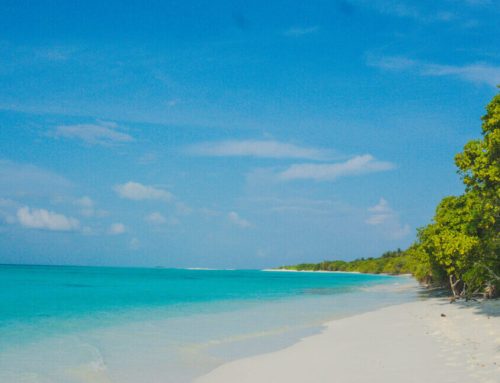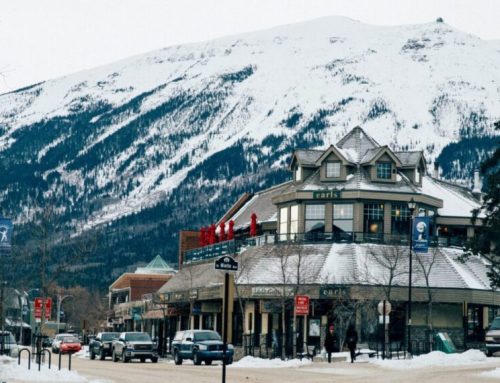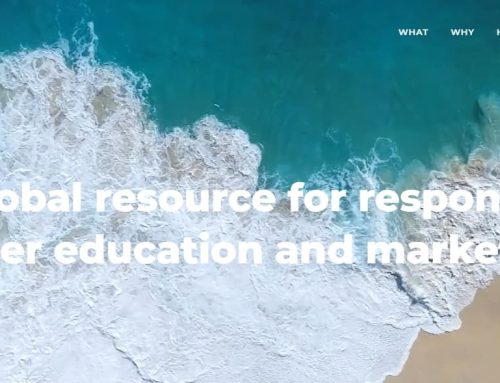Destination Stewardship Report – Winter 2022 (Volume 2, Issue 3)
This post is from the Destination Stewardship Report (Winter 2022, Volume 2, Issue 3), an e-quarterly publication that provides practical information and insights useful to anyone whose work or interests involve improving destination stewardship in a post-pandemic world.
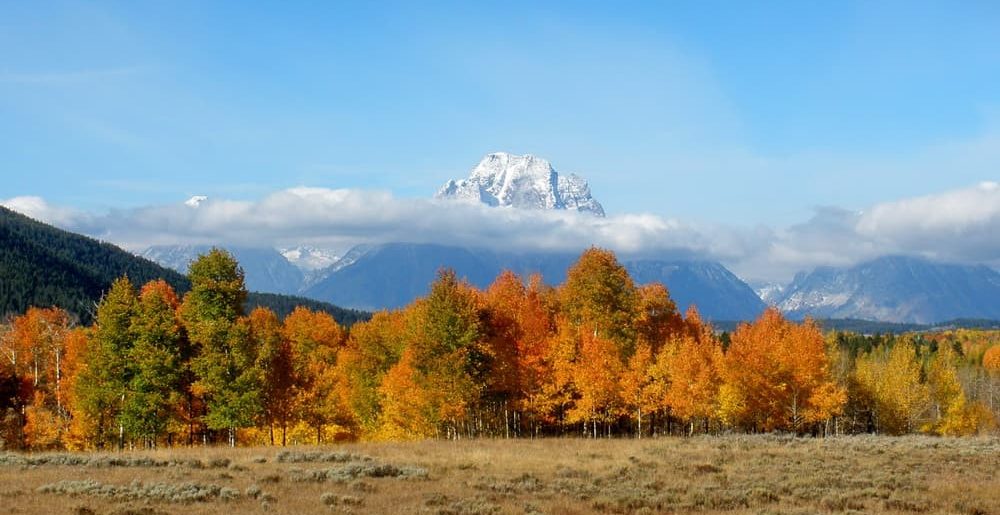
The snow-capped peak of Mount Moran rises above the fall foliage in Grand Teton National Park. [Photo by Roi Ariel]
Teton County Stewardship Journal
What does it take to align a destination’s differing stakeholders and separate agendas into a coherent sustainability program? In Teton county, Wyoming, USA, better known as Jackson Hole, a mission to “unite efforts” sounds simple. As Tim O’Donoghue’s journal shows, however, those two words conceal a host of challenges when dealing with a complex, often overtouristed destination that includes two iconic national parks. The good news: The challenges can be overcome, with patience.
Jackson Hole’s Journey Toward Sustainability – A Journal
Before I start: Teton County covers 4,200 square miles of some of North America’s most pristine wild lands and is home to the most abundant, diverse wildlife in the lower 48 states. Also, known as Jackson Hole, our destination includes Yellowstone and Grand Teton national parks, two national forests, the National Elk Refuge, and the headwaters of eight major rivers in the United States. Our year-round population is 23,500 with an annual visitation of over 4 million. Since 2014, our visitation has markedly increased with all visitation records breaking during Covid. Simultaneously, budgets that support the infrastructure and services that visitors and residents have relied upon have decreased, as has staffing in our national parks, other federal agencies, and local businesses. We are experiencing the “perfect storm” of overtourism challenges. To meet these challenges, the Riverwind Foundation and I as its Executive Director created the Jackson Hole & Yellowstone Sustainable Destination Program to “Unite efforts to minimize resident and visitor impacts on the Greater Yellowstone and other ecosystems now and for future generations.” These efforts started with energy efficiency and renewables, waste management and recycling, alternative fuels and transportation, and have expanded to embrace local and whole foods, biodiversity restoration and conservation, and visitor and resident outreach and education. The following are my journal entries of our sustainability journey.
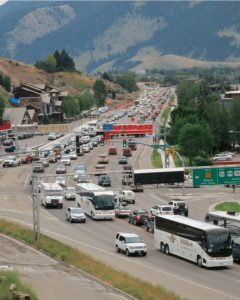
Heavy traffic in Jackson during the summer months. [Photo courtesy of Buckrail News]
December 2013 – Our newly formed Steering Committee of sustainability subject-matter experts and key stakeholders just finished the first action plan for our sustainable destination program after nine months of meetings and one-on-one conversations. The initial response to announcing the formation of our Steering Committee was unexpected. We expected it would be challenging to convince people to give their time and see the value of lending their expertise. Instead, to accommodate all the requests to participate, we had to limit the Steering Committee to 12 and form a larger, informal “partners” group with volunteers we activated depending on our planned actions. We discovered that our planned work aligned with the goals of many of our new partners, either through work they were already doing or work they hoped to accomplish. All that was needed was a centralized group to bring together various stakeholders and pool resources.
One of our goals is to go for destination certification within five years. We have a lot of improvements to pursue, especially concerning destination management. We have our work cut out. I guess we should have thought a little more about all of this before taking this on.

Onlookers gather to watch the Town Square Shootout re-enactment during the Old West Days Celebration in Jackson. [Photo courtesy of Jackson Hole Travel & Tourism Board]
October 2014 – Our first inventory of Jackson Hole’s sustainability assets has been completed! We collected detailed information on our community’s sustainability organizations, programs, facilities, and capabilities from 120 stakeholders. Importantly, we also learned what their sustainability needs and interests are. That will help us design future sustainability trainings.
January 2015 – We had a great session with over 30 high school students during their arts and literature retreat out in Grand Teton National Park. We brainstormed ideas for a sustainability code of conduct for our entire destination.
June 2015 – Thanks to our sustainable destination Steering Committee and our school faculties, we finished the Jackson Hole Sustainability Code of Conduct. Little did we know that over 200 students would eventually get involved in designing the graphics and wording of it! Guiding the creative processes of that many students to a finished product was a major exercise in patience and coordination (they were very creative), but it was fun and definitely worth it. Our chamber of commerce wants to include the code of conduct in their visitors’ guide. So we will be reaching our first 100,000 visitors in the next six months.
March 2016 – We just worked with the 150th business participating in our sustainability workshops and technical assistance programs. It’s great to see the momentum build within our business community to learn about sustainability principles and incorporate them in their practices. One of our newest workshops was created to help businesses institutionalize their sustainability efforts – putting in writing their goals, policies, and practices in a Sustainability Management Plan, formal training program, and/or employee manual.
January 2017 – The Community Foundation of Jackson Hole just released the results of a survey of our local conservation organizations. It found that negative tourism impacts are one of the most significant concerns for protecting our environment and natural resources. Since we just started to implement our sustainable destination action plan, this study ought to help our cause.
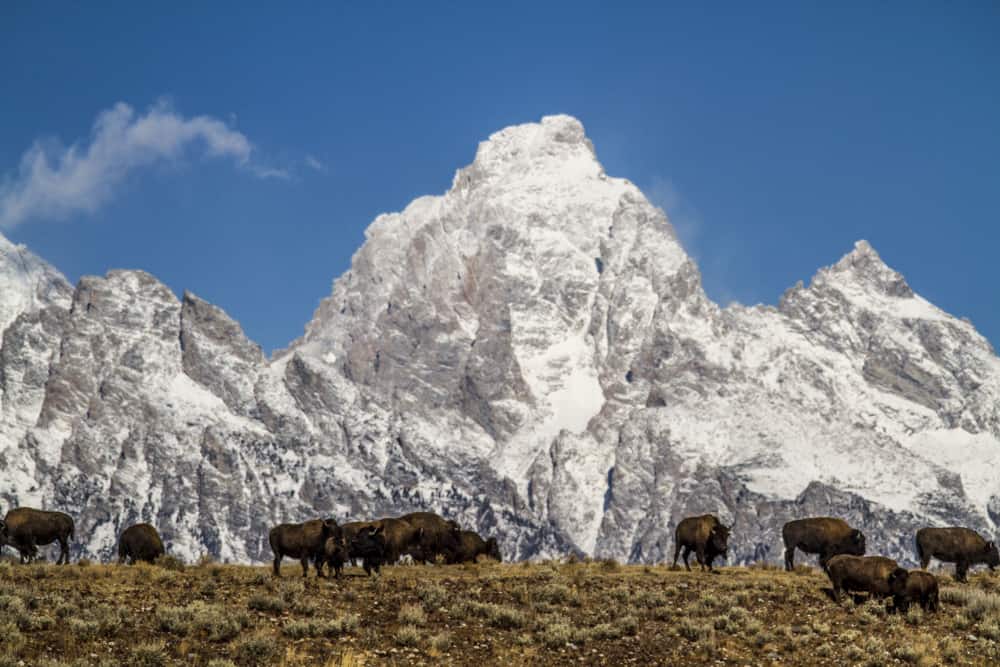
A herd of bison grazes on a hilltop with the mighty Teton Range looming in the background. [Photo courtesy of Jackson Hole Mountain Resort]
April 2017 – After the Riverwind Foundation discussed with diverse stakeholders what a desired future of tourism would be and with our local government staff on how to write a resolution to express that, our town and county elected officials unanimously voted in support of it: a resolution for Jackson Hole to be a world-leading sustainable community and destination! Now we have an official rallying cry!
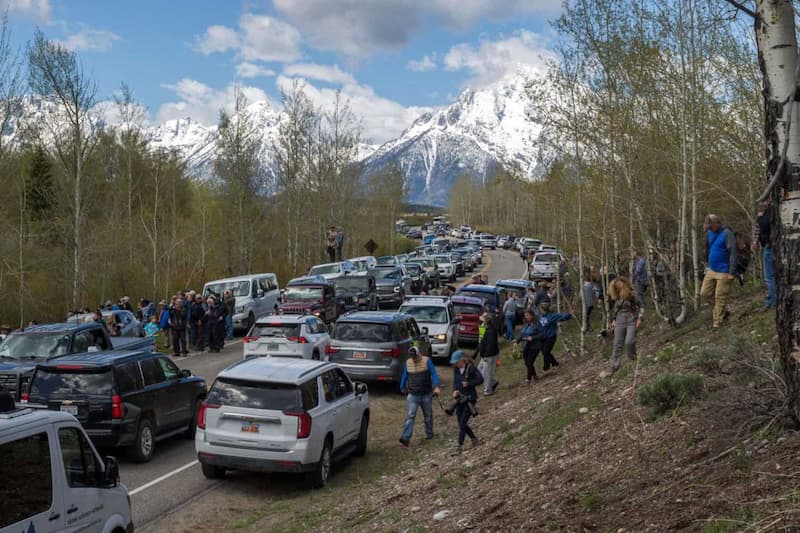
A bear sighting causes traffic to block the road in Grand Teton National Park. [Photo by Ryan Dorgan, Jackson Hole News]
November 2017 – We just finished our first sustainability “Hotshots” program comprised of young “green-collared” team members. They doubled the number of businesses that have been trained by helping each enterprise work through a 90-question survey. The answers would yield a to-do list of sustainability practices in such areas as energy efficiency, waste management, biodiversity protection, and community investment. By my calculations, we just passed the 300 mark for businesses and organizations that we’ve worked with. Proof of concept: We can provide basic sustainability training to newly graduated university students and then unleash them into our community with the survey to train businesses.
February 2018 – With the help of students, we just created our community’s first report card on our destination’s sustainability status and progress toward our goals and international standards for sustainability, including energy and fuels, transportation, waste and recycling, and food. There was quite a bit of enthusiasm with the students who seized the opportunity to issue a report card on adults!
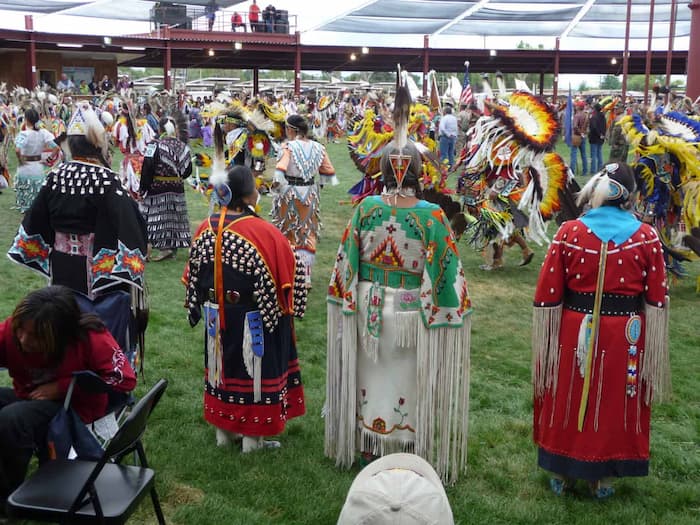
The Teton Pow Wow offers an opportunity to experience Native history and culture from regional tribes. [Photo by Tim O’Donoghue]
December 2018 – We just passed the 400 mark with businesses and organizations that we’ve engaged with in our local sustainability training, technical assistance, and certification programs. Speaking of certification, we are in our initial year of our local BEST sustainability certification program. Our first cohort of business and organization participants are developing their sustainability management plans and preparing for their assessments (we don’t like “audits”). It’s really great to see these future community and destination leaders pushing their sustainability envelopes.
January 2019 – Here we are, five years after we began our sustainable destination program, and ready to go for destination certification! We’ve selected EarthCheck for our first go at certification. Why are we pursuing certification? Because we want a system and set of standards as a practical means for our stakeholders to work together to improve our sustainability performance. (For more details on this process, see our GSTC report.)
March 2020 – After more than a year preparing for, conducting, and responding to the results of an audit by EarthCheck, even as the Covid-19 pandemic struck, we officially received notification that we achieved sustainable destination certification. I’m truly grateful to the 44 volunteers and the Riverwind Foundation’s community partners in contributing so much of their time, energy, and information to make this happen. We know that like most other travel and tourism destinations we won’t ever be completely sustainable, but we now know what it takes to become more sustainable, and how to use a set of standards and processes to engage our community in that effort.
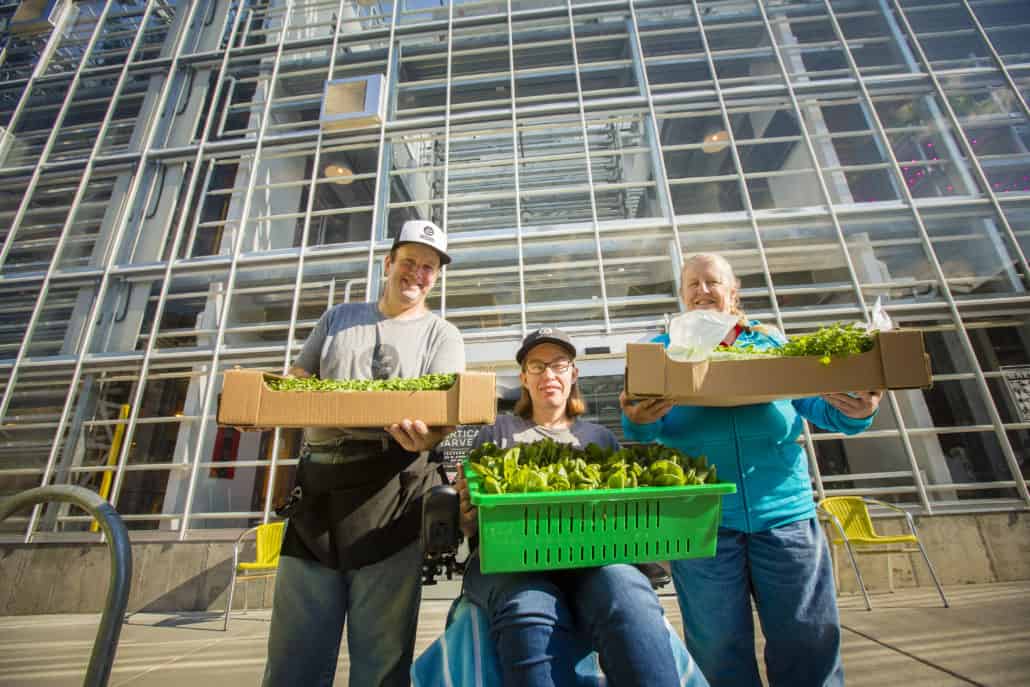
Vertical Harvest energizes local food systems via hydroponic, vertical, controlled environmental agriculture to deliver healthier food and futures. [Photo courtesy of Vertical Harvest]
January 2022 – While there will be much more to say about the destination management activities that have transpired in Teton County from 2019 to the present day, I want to note that Teton County has also sought a balanced relationship between tourism and Covid. Other than in the spring of 2020, when we asked our visitors to reschedule their trips, we have been open for business. Our record-breaking visitation since then has been the result of a large U.S. drive market with a pent-up desire to flee restrictions and densely populated areas to less-restricted, wide-open spaces such as our Yellowstone and Grand Teton national parks. I expect that even when Covid becomes a “normal” disease in our lives, challenges to sustaining and regenerating the integrity of our natural and community resources will continue. Thus, a holistic approach to destination management will also be “normal” for Teton County.
The story of our journey continues . . .
About the Author
Tim O’Donoghue is the Executive Director of the Riverwind Foundation. He is also leading the collaborative stakeholder and sustainable community development efforts of Teton County, Wyoming through the Jackson Hole and Yellowstone Sustainable Destination Program.


